SCIENTIFIC VASTU PRINCIPLE | DIMENSIONS (AAYADI) | An Architect Explains
After Selecting the Site, it is advisable to apply Vastu Principles and tips to the design of the building. This will ensure a proportionate, aesthetic and beautiful building with the right measurements. One of the five Vastu principles called ‘Aayadi – dimensions’ is a guide for designing and planning buildings with the correct dimensions.

The Vastu Principle – Aayadi or dimension prescribes six formulae to work out the correct dimensions (length, breadth and height) of a building. Since Vastu is a science, every guideline is based on logic and scientific reasoning. As an Architect, I have explained these guidelines rationally and scientifically under the following headings, so that you have a choice and can decide what you want to follow or don’t instead of looking at Vastu as a superstition:
What does the Vastu Shastra principle, “Aayadi” mean?
What is the purpose of Aayadi in Vastu Shastra?
Explain the Aayadi formulae?
How does one use the Aayadi formulae?
Fixing the breadth
Fixing the length
Fixing the formula for buildings oriented to the cardinal directions
Fixing the formula for buildings not oriented to the cardinal directions
Fixing the height
Why was it necessary to fix dimensions according to Aayadi in Vastu Shastra?
WHAT DOES THE VASTU SHASTRA PRINCIPLE, AAYADI MEAN?
Though the science of Vastu follows generic rules for the design of spaces, a specific set of six formulae called Aayadi are used to work out the Length, Breadth, perimeter, area and the height of the building.
Here, the length and breadth mean the outer measurements of the foundation seen above the ground. The height of the building is considered to be from the bottom of the base to the topmost point of the building.
WHAT IS THE PURPOSE OF AAYADI IN VASTU SHASTRA?
Like the other Vaastu principles, it is necessary to follow the Aayadi formulae strictly in order to build a proportionate building and to experience positive effects within the building. In fact even today, Aayadi is the only aspect of Vaastu Shastra that is followed in many parts of India.
EXPLAIN THE AAYADI FORMULAE?
Aayadi constitutes six formulae Aaya, Vyaya, Yoni, Raksha, Vara and Tithi. The remainder obtained by using these formulae determines whether it is a gain or loss. If it is a gain, then the structure is proportionate and stable and the dimensions are right. However if it is a loss, then it means the dimensions are not right and should be suitably corrected. So this formula is a good guide to decide the correct proportions of a building.
- Yoni is the remainder of Breadth x 3 divided by 8
- Vyaaya is the remainder of Breadth x 9 divided by 10
- Aaya is the remainder of Length x 8 divided by 12
- Raksha is the remainder of Length x 8 divided by 27
- Vara is the remainder of Height x 9 divided by 7
- Tithi is the remainder of Height x 9 divided by 30
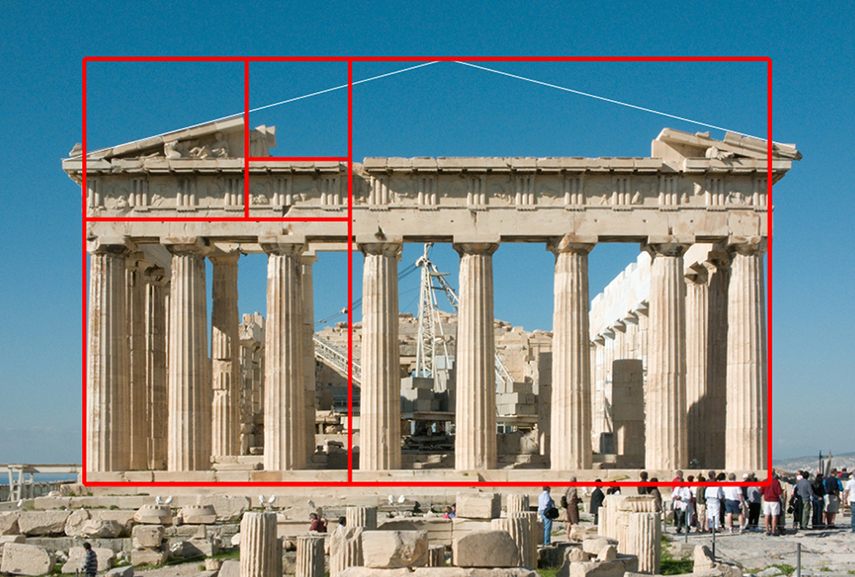
HOW DOES ONE USE THE AAYADI FORMULAE?
One can use the Aayadi formulae to check whether the length, breadth and height of the proposed building are in proportion. Accordingly, the dimensions of the length, breadth or height can be corrected as explained here:
FIXING THE BREADTH:
Utilise the Yoni and Vyaya formulae to fix the breadth of the building. If the remainder obtained in the Yoni formula is an odd number, then it is good whereas if it is even, then it is bad Yoni.
- Thus, 1, 3, 5 and 7 remainders are considered good Yoni and associated with the directions East, South, West and North, respectively. Therefore depending on the direction the building faces, the corresponding Yoni should be used to fix the breadth of the building/rooms.
- Also, the Yoni of the first floor should be the same as the Yoni of the ground floor.
- When an old house is being renovated, then a new Yoni different from the Yoni of the old house should be used for the renovated house.
FIXING THE LENGTH:
Use Aaya, Vyaya and Raksha formuale to fix the Length of the building/rooms. Aaya also known as ‘Aadhayam’, means income and ‘Vyaya’ means loss or expenditure. Therefore, ensure the Aaya is always be greater than the Vyaya.
Therefore, by using the Aayadi formulae it can be concluded that for the Aaya to be more than the Vyaya the length of rooms/building should preferably be 1.5 times the breadth or at least 1.375 times the width. This is why we find that sites are generally not square but rectangular with a Length 1.375 – 1.5 times the Breadth. For example: Sites have dimensions of 40′ x 60′, 30′ x 40′ and 50′ x 80′.
FIXING THE FORMULA FOR BUILDINGS ORIENTED TO THE CARDINAL DIRECTIONS:
The Yoni formula defining the breadth measurement is useful for buildings that are not oriented to the cardinal directions. Vastu Shastra clearly emphasizes the importance of orienting the buildings to the four cardinal directions (North, East, South or West).
The Scientific Reasoning- The ancients were aware of the power of monsoon winds and other energies (physical and metaphysical) on structures. Scientifically, it is known that if the 4 faces of the buildings orient towards the cardinal directions, they can withstand the impact of these energies and also benefit from them. In fact most religious buildings, palaces, cities, villages and roads of ancient India and many other parts of the world face the cardinal directions. Examples: the Giza and Great pyramids of Egypt face North.
FIXING THE FORMULA FOR BUILDINGS NOT ORIENTED TO THE CARDINAL DIRECTIONS:
As far as possible, buildings should not be oriented to the intermediate directions. But in rare situations, if the site faces an intermediate direction, the 1 Yoni should be used for fixing the breadth of the building.
The Scientific Reasoning: If it is not possible to orient a building to the cardinal directions, it is important that the dimensions of the building should be such that it can withstand the forces of nature. This is where the Yoni (Breadth) calculation of 1 is useful.
FIXING THE HEIGHT:
Fix the height of the building using the Vara and Tithi formulae. Additionally, make sure that the height of the first floor is not more than that of the Ground floor. For arriving at the right height of a building, the ‘Proportion’ should also be considered. This has been explained in the post Vastu Principle Maana Proportion.
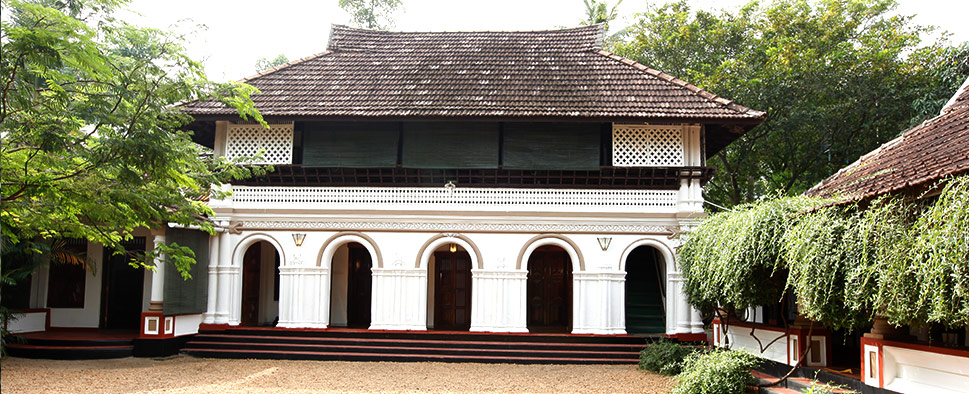
WHY WAS IT VERY NECESSARY TO FIX DIMENSIONS ACCORDING TO AAYADI?
The Scientific Explanation: One reason was that, in those days the units of measurement were not uniform in different regions. The units of measurement were Angula (3/4 of an inch) and Hasta ( 18 inches) so that 1 Hasta equals 24 Angulas. However the value of Hasta and Angula differed in different regions. Therefore, by using the Aayadi formulae for fixing the dimensions of a building, one did not risk creating disproportionate spaces.
Furthermore these formulae were formulated in order to make it easy for the Architect to create rooms with the right sizes for the correct fit of tiles on roof purlins and roof purlins on rafters and rafters on the walls of the rooms, since in olden days, most houses had tiled roofs with wooden rafters and purlins.
Typically in any wooden roof construction, the inclined roof rafters rest on the lintels/walls/under-purlins with a spacing of 18″ or 24″ centre to center or closer. Horizontal roof-purlins prop on top of the rafters, to which both the top roof tiles and the decorative under ceiling tiles are fixed. Since the whole roof system is visible from the inside of the house, care is taken to have neat joints and decorative rafters, purlins and ceiling tiles. So for such precision work it was ideal that the room dimensions be in multiples of the rafter /purlin/tile spacing.
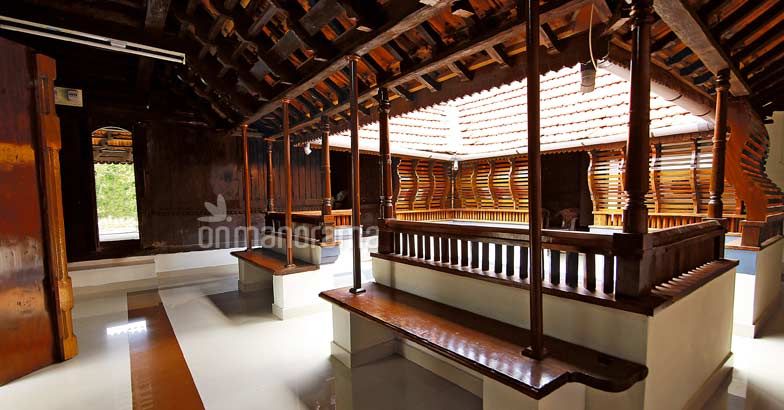
READ ALSO:
This post about the ‘Vastu Shastra principle | Aayadi – Dimensions‘, explains the six formulae used for fixing the dimensions of a building. The dimensions, Length x Breadth x Height, relate to the form/shape of the building. Read about the different forms of buildings in the post, “Vastu Shastra principle | Chanda – Aesthetics”, here:
If you found this post useful, all it takes is a simple click on the “pin it” “like,” “share,” “tweet,” or Google+ buttons below the post.
Related Topics:
- Vastu Shastra | Explained By An Architect
- Vastu Shastra | Principles For A House
- Vastu Shastra | Factors That Impact A House
- Vastu Guidelines | Designing A House
- Vastu Guidelines | Interiors Of A House
- Vastu Guidelines | Exteriors Of A House
- Vastu Guidelines | Selecting The Right Site
- Vastu Guidelines | Construction Of A House
- Vastu Guidelines | Rituals For A House
- Vastu Guidelines | Non-Residential Buildings
- Remedies For Vastu Defects

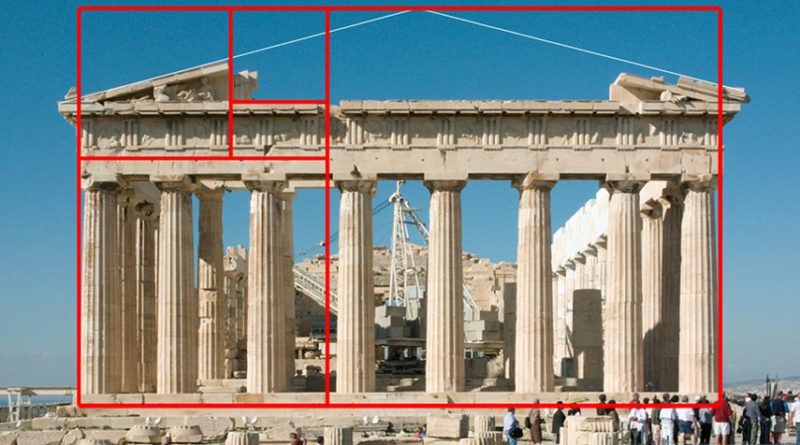
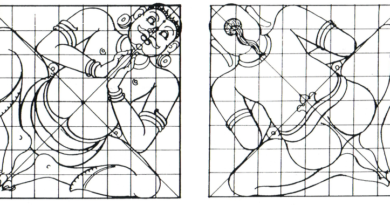
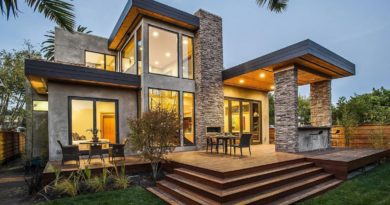
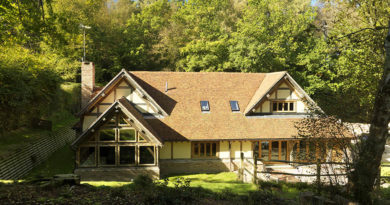
Sir. Hall room size 11×13,11×12″6″,11×12″9′ best size?
Hi Rajakumar,
Given a choice, always go for bigger sizes. Even 3″ can make a difference. So I recommend 11′ x 13′ as an okay size for a hall.
Admin
Hello there ,
As per vasthu sasthra , How should we consider lengths/ widths , what i mean generally engineering terminology as stands for for ex. room size-Center to Center of brick/block wall? Like same if we want take length of the room should we take it as internal dimensions/external dimensions/ (or) Center to Center of the wall?
It was a really knowledge distributing article. I have a doubt. My house is on a NW plot and house is also NW facing. Main door, Entrance to the plot is also NW side as the main road is on NW side. I also read somewhere that a NW plot is good for whose lagna is MESH or moon si in UCHCHA rashi. My sun sign is Mesh and Moon Sign is in Uchcha Rashi Vrishabha. I want to reconstruct the house on NW side. What is your guidence?
Hii
This is soubhhagya,i want to build a house can you suggest me the length and breadth of the house should be perfect in vastu.I planed for breadth 28ft and length 34ft ,can you provide perfect suggestions for near to my calculation
My name is Sanmat Sir I am going to built a house it is west east plot the final bultup area is 37*33 is this good aaya
which length of room to considered whether inner room size or outer brick wall size to be consider ?
whether is room size to consider ? or outer full length house to consider ?
There have two door at my new house, one is east side door ( north- east side)- ( 50″) and onther is north side (north – east corner) – 44″
house size (45×40)’ East to west 45′ and north to south 40′
kitchen (8’x10.6′) south – east side
Dining ( 20’x10.6′) east side
stairs (10’x16′) south side
Bed Room 2 (11’x11′) south side
Master bed ( 11’x16′) south west side
bath 1 ( 6’x 16.5′) west side
bath 2 ( 5’x 11’10”) west side
Bed 3 ( 10.5’x 16.5′) west north side
Drawing ( 20’x 22.5′) north to north east side
is it ok or bad house for me?
Hi Sir,
I would like to ask some guidance.
north to sourth 35 feet, east to west 25 feet, road south facing site is how much area can built as per vastu with
I want to know how to calculate ayasu for perimeter (in 9 different calucation) i am thinking to build
Is there no room size between 11 and 16 feet which can be used for bedroom. According to calculator anything below 16 and above 11 is not good. Also somebody mentioned the width to length ratio should be 1.3to1.5.. I don’t seem to get this ratio for the good one.
Could you please let me know whether room sizes must be calculated as outer-to-outer or innet-to-innere
Dear sir,
pls tel me how to calculate square feet in a house , is it taken into consideration veranda, and car porch as well.
I have purchased 55×40 = 2200Sqft site facing north & west roads so it is North-west site what is suitable area for building house as per Aaya
Kindly let us know if the wall thickness is included in the length/breadth of a room for shadi calculation. Thanks
Hi, i am vikesh yadav sir my house is not according to vastu ,i wanted to sale my house, house is east south facing will u please suggest me a good way to sale this house as soon as possible ,by doing an vastu
Hi,
I have constructed and triplex North facing house. Site measurement is 40*40, on North-East 2.5 ft is extended. Built up area is 35*34. The Ground floor and the First floor has the same measurement. Second floor measurement is 23*34.
Total building builtup area is 3200stf (32Chadra).
Please let us know which aaya due it fall under.
Hello Sir,
My name is Shivraj.
I have a plot size of 26 feet from North to South and 42 feet from West to East. Now I am going to build a house, so you can suggest me that to as much as possible small house plans.
Thank you
Dear Sir, I want to construct Residential building In GF Hall & kitchen& FF is two bedroom s with attached one WC & one bathroom. Please suggest me I will want dimensions of the building.
Hi Bassappa,
Consult an architect with your requirements. The dimensions will depend on the setbacks, the site dimensions and all your requirements.
Admin
length of my house is 54 And breath 22 is it ok according to your measurements
Hi Lalitha,
I am not an expert in this. But one of my readers Mr Pradip Mannil, has generously shared an Aayadi calculator. Download it and clear your doubts.
Admin
Sir,
If I will send a rough plan(by mail) of my house can you correct its dimensions as per vastu ?
Thanks, K.R.Vasudevan.
Hi Vasudevan,
I am not a vastu specialist and I do not comment on the vastu aspects of a plan.
Admin
Hi,
I have a west facing house (inclined 13degree towards southwest). The existing perimeter of the house is 4962 cm. now I want to construct another floor on top of it. As per the calculation of Pradeep mannil the yoni should be 1. Can correct the perimeter to 5016 cm from existing 4962 cm. expecting reply.
Thanks
Sujith( my birth star is revathi)
Hi Sujith,
Since you seem to be keen on going by exact dimensions and yoni etc, it is better you consult a vastu expert on this matter. I am only interested in interpreting Vastu Shastra as a science and not as something to be followed exactly out of superstitious fear.
Admin
Sir,
Is this dimensions are to be measured in outer surface of building including the tiles / after surface finishing?
(or) Is this dimensions are to be measure at the foundation / Columns at the start of construction?
Please clarify…
Hi Srinivasu,
The dimensions mentioned here are with respect to the foundation and structure. Not with finishing.
Admin
Namaste,
if in the north-east side, we leave some area for car parking under the same pillars, shouid that area be included in calculating the aaya? Plz help
Hi Krishna,
In calculating Aaya, consider the outer dimensions of the foundation of the building. You do not need to consider the porch area unless there is a foundation under the porch which is connected to the main building.
Admin
Hi,
For those who need auspicious perimeter, aaya vyya, age please use the vasthu calculator from the given link below. it can be used to find the perimter of the plot, house and rooms.
Please note when say remiander 1 (dwajayoni) it can be used for all directions.
3 is for south facing house . The facing of the house is calculated towards the courtyard. So in the measurements calculations which show south is for a house exactly facing north.
the link is given below. the excel file can be downloaded and can be used for finding the auspicious perimeters.
http://www.cadlispandtips.com/2014/11/xls-vasthu-perimeter-calculator.html
Regards
Pradeep
Thanks Pradeep for the info. All of you who have doubts regarding calculations, refer to this.
Admin
@sunitha,
Hi,
Aayam and vyayam is claculated for the house . not for the plot.
Hi,
Please go through the following site which can throw more light on vasthu.
http://vasthuvicharam.blogspot.com/
We r planning to construct a home. Our site dimensions is east facing 26feet and south facing is 27feet. I want to know that aaya of our site
Hi Sunitha,
You can read the detailed explanation given by a vastu expert Mr Pradeep Mannil in the comments section of this post.
Admin
Is the square rooms auspicious. I have designed rooms measuring 14 feet x 14 feet in my house and one room of 12 feet x 12 feet. The plot on which construction is to take place is east facing. Pradeep Mannil’s explanation is just for calculating yoni.
What is dwjayoni?
Why two formulaes for each length, breadth and height? which to follow?
What about the remainders in the other formulaes? (Vyaaya is the remainder of Breadth x 9 divided by 10)
Harjeet Mann
Hi Harjeet,
It is recommended to have square or rectangular rooms in Vastu Shastra. But as an architect, I prefer using rectangular modules in the design of houses as they are more proportionate and better used. I do not know dwjayoni – it must be the same as yoni. In this post, I have attempted to find a scientific explanation for the reason the ancients followed aayadi formulae, in Vastu Shastra. But I do not personally follow these rules in my designs as they are not practical and I do not understand them. So I will not be able to help you.
Admin
My site east20*narth 30.
How to calculate aaya,
Hi Raghavendra,
You can read the detailed explanation given by a vastu expert Mr Pradeep Mannil in the comments section of this post.
Admin
i have the following room size
3415*3905
3025*2900
3750*2800
i have the option to change the size of the room and can reduce the size of 1st and last room and enlarge or reduce the middle one please advice
Hi Amit,
Please refer to the detailed explanation given by a vastu expert Mr Pradeep Mannil in the comments section of this post.
Admin
i have PLOT OF east-west(18 foot) and north-south (45 foot) i request you for best aya in this area to construst new residential house in south side is road. my rashi is kanya nakshtra is uttara i choice dwajaya (15*39) aya. in aya incluing walls of two sides or not ex: in 15 foot including wall or excluing wall please you tell me.
Hi Vidya Nadgir,
I am not sure if the rashi or nakshatra is taken into account in Vastu Shastra because a house is inhabited by many members of a family with different nakshatras. But for detailed information on aayadi calculation, please refer to the explanation given by Mr Pradeep Mannil in the comments section of this post.
Admin
one example :for calculating yoni , same example can be used for other ayyadi calculations too.
perimeter of the house : lenght : 1554 cms , width: 1338
so perimeter is 2(1554+1338)=5784 convert this to hasta by dividing the same by 72
(24 angulas are one hasta, 1 angula = 3 cms, therefore, 1 hasta = 72 cm)
which equals = 80.33 and in dwjayoni
to know the yoni multiply the perimeter by 3 and divide by 8,
So 80.33 x 3 = 241 hastha
when 241 is divided by 8, the reminder is 1 so the perimeter is dwajayoni which can be useful for all directions
if your house faces east yoni of 5 or 1 can be used
if your house faces west only yoni of 1 should be used
if your house faces south yoni 7 should be used
if your house faces north yoni of 3 should be used
yoni changes as per direction . they are the reminders when you mulitply the perimeter by 3 and divide by 8 you get the yoni. avoid yoni 2 4 8 which is bad.
Hi Pradeep Mannil,
Thank you for the detailed explanation. I am sure many of my readers will be benefited by these calculations.
Admin
The measurement of North to south is 13 sq feet and the measurement of East to west is 15 sq feet .pl tell me the result is it good or Bad.
Hi Ramesh Babu,
Please refer to the detailed explanation given by a vastu expert Mr Pradeep Mannil in the comments section of this post.
Admin
hi what should be the bed room size length and breadth according to vastu
Hi Jatinder,
As a thumb of rule, the length to breadth ratio of a space/room should ideally be 1.375 to 1.5 for it to be efficient.
Admin
Hi,
We are constructing one house.Hw to consider the vasthu width and lenght?we saw the vasthu size in website in
feet.should we consider full building size or only room sizes as per vasthu sizes.what about portico.is it included in the vasthu size?we are under assumption that over all building size (without portico) should be as per vasthu size.is it correct?our overall building length comes to roughly 50 feet.but no good points for this size.otherwise if we consider only room size for vasthu, we can fix our Hall room size at 33 then good points on this size.
pls advise me.vasthu will be considered for room wise or full building wise?
Thanks in advance.
S.Suresh.(08904078438)
Hi Suresh,
I have attempted to find a scientific explanation for the reason the ancients followed aayadi formulae, in Vastu Shastra. But I do not personally follow these rules in my designs as they are not practical and I do not understand them. So I will not be able to help you. But if there is any vastu expert on this forum, you are welcome to give your opinion. One such expert Mr Pradeep Mannil has explained in detail in the comments section of this post.
Admin
we planned to construct company we planned to 30 feet X 100 feet by asbestos sheetplease guide me what will be height lenght and breath
Hi Ramamurthy,
I have attempted to find a scientific explanation for the reason the ancients followed aayadi formulae, in Vastu Shastra. But I do not personally follow these rules in my designs as they are not practical and I do not understand them. So I will not be able to help you. But if there is any vastu expert on this forum, you are welcome to give your opinion. One such expert Mr Pradeep Mannil has explained in detail in the comments section of this post.
Admin
What is the method to arrive the remainders of length and breadth resply?
In the ayadhi the calculation of yoni aaya and vyaya is clear but the rest is not given properly can you give an illustration for the same.
Hi Jayan
You can read the detailed explanation given by a vastu expert Mr Pradeep Mannil in the comments section of this post.
Admin
how to calculate the pereferable height for a home L = 1751cm & W = 1525 cm
Hi Anish,
You can read the detailed explanation given by a vastu expert Mr Pradeep Mannil in the comments section of this post.
Admin